#WaterAid
Photo
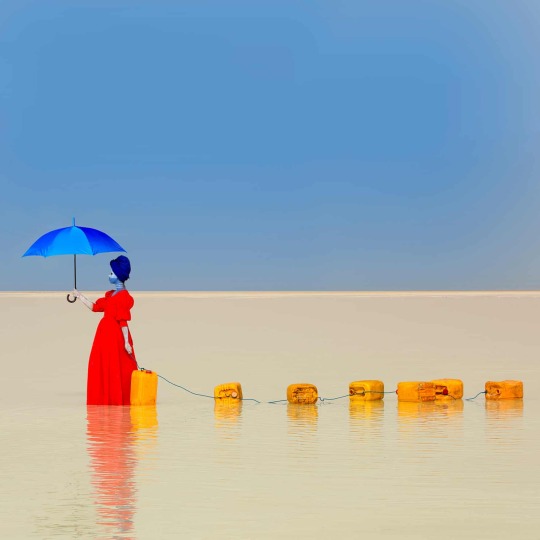
The artist shining a light on water poverty in Ethiopia – in pictures
Although artist Aïda Muluneh had an itinerant childhood in Europe and America, she was born in Addis Ababa and is an expert in African photography. When charity WaterAid asked her to participate in a campaign highlighting water poverty, it was the women of Afar, northern Ethiopia, that she shot for her series Water Life, now included in Ekow Eshun’s new book of African art and photography, In the Black Fantastic (Thames & Hudson), published to coincide with a show at London’s Hayward Gallery.


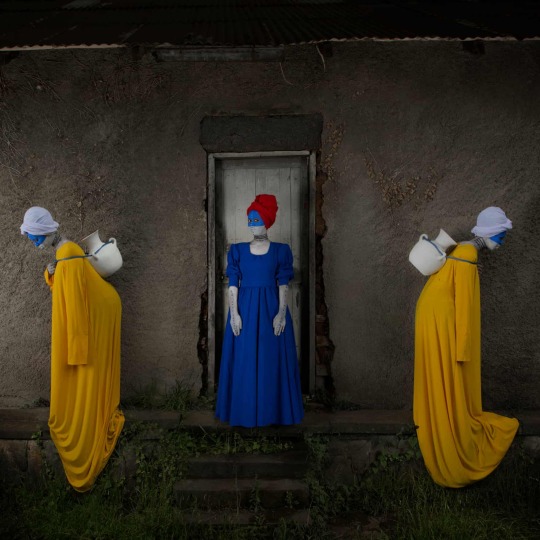
#aida muluneh#photographer#artist#art#water poverty#ethiopia#culture#addis ababa#african photography#wateraid#afar#water life#photo series
15 notes
·
View notes
Text
Kenyan Herders Seek Water
Kenyan herders are digging deep to find the water they need for themselves and their cattle.
Kenyan herders are digging for groundwater as an extended drought means dry riverbeds and dying cattle.
The shallow rivers in much of Eastern Africa are drying up. In Samburu County, a region of Kenya, there is no surface water to be found anywhere these days.
“We had thousands of livestock four years ago when we experienced short rains,” said Letoyie Leroshi, one of a group of Kenyan herders.…

View On WordPress
1 note
·
View note
Text
Build A Water Well for water aid | MATW France

Muslims around the world are encountering severe water crisis for various reasons. Help us build a water well in these communities to let them have pure drinking water.
Water aid for Muslims in crisis
Water is the most important element of human life. Without fresh water, people cannot survive. But unfortunately, the whole world is going through a water crisis. This crisis is particularly severe in the Muslim communities of Africa. Some other countries are facing this catastrophic situation too. Countries like Palestine, Syria, Yemen, Lebanon, and Afghanistan are hit by wars and conflicts which make their water supply systems collapse either completely or partially.
To help these Muslims, MATW France has extended its hands to supply fresh and clean water to these crisis-hit areas. But we can’t do it all on our own. We need your humanitarian aid to accomplish this task. Please send us your donations and Muslim charity to let a Muslim family in Palestine or Syria have fresh drinking water.
Water Crisis – Your Way Of Gaining Sadaqah Jariyah
An estimated 4 billion people all over the world are experiencing a severe water crisis for at least a month every year. And 2 billion+ people are living in countries that do not have a solid water supply system. The current situation, no matter how dire it looks, is nothing compared to what’s coming in the future. Predictions have been made that half of the world's population will be facing severe scarcity of water by 2025. And by 2030, an estimated 700 million people could be displaced due to the water crisis.
It is high time we could do something for the distressed people. MATW Project has started building water wells and water well pumps in several countries. If you decide to be a part of this water well project, it will be the best form of sadaqah jariyah for you. You may also donate to us in the name of your parents and/or family members so that they may get eternal rewards for as long as the people get benefits from these wells.
0 notes
Text
WaterAid Uganda and The Ministry of Water And Environment Launch Climate Change Adaptation Project In Eastern Uganda
A Sigh of Relief With The Climate Change Adaptation Project
Residents of 11 districts in Eastern Uganda can now look forward to relief from flooding and landslides with the launch of a climate change adaptation project in the Mpologoma water catchment area. This $9.5 million project, funded by the Adaptation Fund, will be executed by WaterAid Uganda in partnership with the Ministry of Water and…
#Climate Change#Flooding#Ministry of Water and Environment#uganda#WaterAid Uganda#WaterAid Uganda and The Ministry of Water And Environment Launch Climate Change Adaptation Project In Eastern Uganda
0 notes
Text
WaterAid Vacancy 2024 for Finance and Partnership Specialist
WaterAid Vacancy 2024 for Finance and Partnership Specialist. WaterAid is an INGO inviting applications for the post of Finance and Partnership Specialist for Nepal by Sunday 28 July 2024.
CAREER OPPORTUNITY
WaterAid Vacancy 2024 for Finance and Partnership Specialist
WaterAid is an international not-for-profit, determined to make clean water, decent toilets and good hygiene normal for…
#Finance and Partnership Specialist#INGO Jobs#Job Vacancy#jobs in kathmandu#Jobs In Nepal#WaterAid Vacancy 2024
0 notes
Text

2020 December 13, Wateraid Bathroom Sessions ║Download (x)
Favourite Ex
Graceland (Cover)
Maybe Don't
1 note
·
View note
Text
Senior Communications Manager for Advocacy at WaterAid Tanzania, Dar-es-Salaam: Grade F – 78 198 768 – 99,291,733 TZS
Senior Communications Manager for Advocacy at WaterAid Tanzania, Dar-es-Salaam: Grade F – 78 198 768 – 99,291,733 TZS
Job Overview
Senior Communications Manager
WaterAid
Dar es Salaam
WaterAid has been working to transform the lives of women and girls for more than 40 years through the power of clean water.
Permanent, Full – Time
Salary:
UK, London (Hybrid): Grade 3 – £42,870 – £51,400
Senegal, Dakar: Grade F – 22 933 445 – 33 480 591 XOF
Tanzania, Dar-es-Salaam: Grade F – 78 198 768 – 99,291,733 TZS
South…

View On WordPress
0 notes
Note
Actually bathrooms shouldn't be gendered at all that's half the problem.
In communities that lack access to single-sex bathrooms, you witness an increase in the rate of sexual violence, physical health issues like incontinence, and mental health issues like PTSD. If women's health and safety aren't a problem to you, then by all means continue insisting that there's no need to provide them, but you should know these issues disproportionately affect poor women, disabled women, young women, and women from ethnically, linguistically, and racially diverse backgrounds (e.g. bathrooms in northern India are particularly unsafe for women).
I'll leave you with a quote from a book I read recently - Invisible Women, by Caroline Criado Perez:
According to the UN, one in three women lack access to safe toilets, and WaterAid reports that girls and women collectively spend 97 billion hours a year finding a safe space to relieve themselves [which affects their productivity, as women are more likely to be engaged in the informal economy, and their safety].
Local governments that fail to provide public toilets may believe that they are cutting costs, but a 2015 Yale study suggests that this is a false economy. [They linked] the ‘risk of sexual assault to the number of sanitation facilities and the time a woman must spend walking to a toilet, and calculated the tangible costs (lost earnings, medical, court, and prison expenses) and intangible costs (pain and suffering, risk of homicide) [against] the cost of installing and maintaining public toilets … [they found public toilets could save one town $5 million better off, which is a conservative estimate, as it doesn’t include the various health benefits saved from women having more regular and more private bowel movements (e.g. chronic constipation, cholera)].
Health problems arising from a lack of public sanitary provision are not restricted to low-income countries. Canadian and British studies have revealed that referrals for urinary-tract infection, problems with distended bladders, and a range of other uro-gynaeloogical problems have increased proportionately to [toilet inaccessibility].
Urban planning that fails to account for women’s risk of being sexually assaulted is a clear violation of women’s equal right to public spaces – and inadequate sanitary provision is only one of the many ways planners exclude women with this kind of gender-insensitive design.
...
For women who try to escape from war and disaster, the gender-neutral nightmare often continues in the refugee camps of the world … [although] international guidelines state that toilets in refugee camps should be sex-segregated, marked, and lockable, [sic] these requirements are often not enforced [and] research by the Women’s Refugee Commission has found that women and girls in accommodation centres in Germany and Sweden are vulnerable to rape, assault, and other violence…
248 notes
·
View notes
Text




Want to own a piece of art by Robert, and support communities affected by climate change at the same time? Bid now on CUYAHOGA FALLS, JUNE 23 a piece Robert has created exclusively for WaterAid UK’s #ArtOfChange collection – a series of climate-themed artworks. 100% of the proceeds from the online auction will go to WaterAid’s work bringing communities clean water, decent toilets and good hygiene - so more people can stay strong against climate change, and transform their health, education and livelihoods.
Place your bid now at wateraid.org/aoc – it's open until 5pm on Sunday 1 October.
The collection has been created especially for this year’s British Art Fair and you can see it in person at the Saatchi Gallery .
#robushka 🥹#waterair uk#charity#the cure#robert smith#art#artist#art of change#music#alternative rock#gothic rock#new wave#post punk#2020s#2023
131 notes
·
View notes
Text

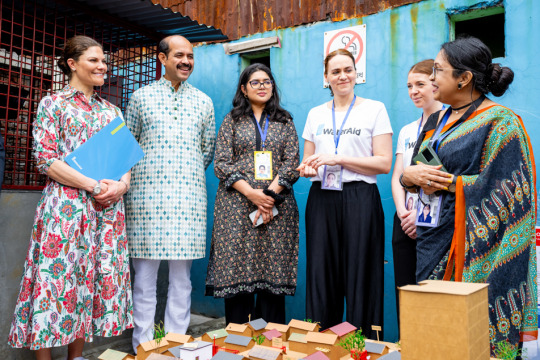

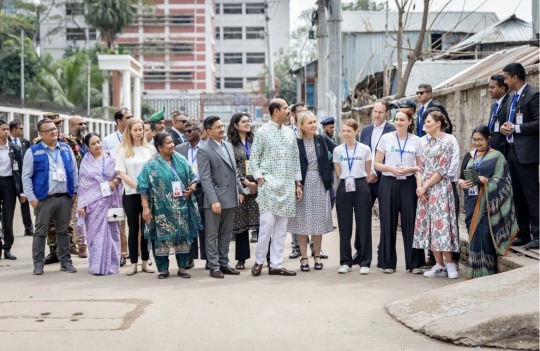

21st March 2024 // Crown Princess Victoria is in Bangladesh, her first visit in her role as a Goodwill Ambassador for the UN Development Programme. On her final day she visited the Sattala Boundaray area to view projects by another patronage, Wateraid, focusing on clean drinking water, garbage disposal, and hygiene. She also visited the UNDP office in Dhaka to meet staff and learn more about their work on the ground.
7 notes
·
View notes
Text

Aida Muluneh Water Life Series, Star Shine, Moon Glow 2018 commissioned by WaterAid and supported by the H&M Foundation © Aida Muluneh
10 notes
·
View notes
Text
Toilet: A luxury For Some
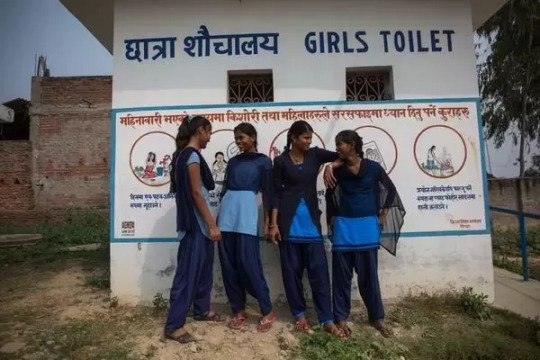
That Toilet is a basic need is something we do not realize since all our homes have not one, but many toilets. But, the importance of toilets was brought home to me when I started Helper4U. When we rented out our first office space, we were on a shoestring budget, and thus had a space constraint. To tide over this, we encouraged girls among our staff to work from home if possible. But, we were amazed to find that they all preferred working from the office rather than from home, even if it meant they could earn more and could also work flexi-time. This was quite surprising because as working women most of us would jump at the opportunity to work flexi-time, not travel, spend more time at home, and still earn more.
Having a Toilet: A luxury for some
On doing some simple research it turned out that the simple reason for this was the absence of a toilet at their homes. All these girls were from slums nearby. They had to use a communal toilet, which was always very dirty, and had no water supply most of the time. Even if all else was well, they had to wait in a queue to use it. That was the first time we realized the impact a toilet can have on people’s lives. Hence we say: Toilet Ek Jaroorat (Toilet is a basic need)
For millions of women, therefore, having a toilet means becoming free: A toilet can be Freedom For Her from so many things. Even for men from slums, it is a luxury. Many drivers come early to work so that they can use the cleaner, and more accessible toilets in the buildings of their employers. This is in stark contrast to the dirty ones in their slums. We, the more blessed ones (with at least one toilet at home) cannot even imagine how not having a toilet can impact the whole life of people, right from what they eat, when they eat, and how they ”go”.
This is not the situation in India alone. Globally, millions still suffer the fear and indignity of relieving themselves in the open or in unsafe or unhygienic conditions — a situation that is most dangerous for girls and women. For more than 1.1 billion women and girls globally, a lack of toilets results in an increased risk of poor health, limited education, harassment, and even attack. WaterAid’s third annual report reveals that women and girls bear the brunt of the Global Sanitation Crisis. Not having access to a toilet puts girls at risk of harassment and attack when finding somewhere to relieve themselves or manage menstruation. Lack of a decent toilet at schools is also a reason for many girls to miss or drop out of school.
How important toilets are for girls can be also gauged from the happy faces of these females posing next to a toilet. Would any of us ever think of posing next to a toilet, leave alone smiling away too?
Some interesting facts about toilets
India tops the list for the longest line for the toilet. While there has been immense progress in improving access to sanitation through the Swachh Bharat (Clean India) Mission, there are still more than 355 million women and girls in India waiting for access to basic sanitation. If they would make a line, it would stretch around the earth more than four times.
Around 289,000 children under five die every year from diarrhea related diseases caused by poor water and sanitation. That’s almost 800 children a day, or one child every two minutes.
Between 2000 and 2015, people defecating in the open dropped from 1.2 billion globally. (20% of the global population) to 892 million (12%). Still enough waste is produced in the open to fill seven bathtubs every second.
This World Toilet Day, on November 19, governments are pledging to do their bit. But, how can we homeowners support this basic human right?
One simple suggestion for all homeowners
Allow your domestic Helpers to use your toilets if they need to go. Rather than send them to the road or bushes nearby, allow them to use your toilets. After all, once flushed, the waste goes through the same process, irrespective of who generated it. Similarly, if someone defecates in the open. And in many of our homes, they are the ones cleaning it. And who knows, they may already be using it in your absence. So, allow them to use it, and feel the joy of giving.
We are all prone to diseases, again, irrespective of who generated it, and where. So prevent it the most you can. A simple gesture at your end will help keep the surroundings in our cities clean.
Allow Helpers to Use Your Toilet. Discourage the use of open spaces that are open defecation.
Remember: Having a toilet is a human rights issue. Everyone has a right to health and dignity. Let us pledge to contribute to it the best we can.
3 notes
·
View notes
Note
Maybe you guys have talked about this in a podcast episode & I've just forgotten about it but, I was wondering about British royal patronages & how they work?
I know that the Swedish royals, they keep patronages for 5 years & either they part ways or renew for 5 more years. But I'm confused about the Brits 😂 like for example Queen Elizabeth, didn't she have hundreds of patronages? Similarly, Anne seems to also have a never-ending stream of patronages & whilst math isn't my strongest subject, I'm pretty sure she doesn't have the time to catch up with all of them every single year.
But if we look at Kate, she seems to have parted ways with some of her previous patronages. Do you have any more insight into how it works? I know that William & Kate are trying to have a different approach than previous generations of royals. So yeah, instead of just asking why for example Anne doesn't part ways with the ones she doesn't have time for, I'm just gonna ask how it all works?
P.S. This question was inspired by WaterAid Sweden who posted that Victoria is gonna continue to be their patron for another 5 years. It's not because Just Harry called himself a royal patron of WellChild. I'm also jealous of Anne's work ethic & energy but that's a different topic 😂
Ooh, we have spoken about it before but I don't remember when.
Essentially, it's a mixture. Some are for life (particularly the Royal patronages - Meghan's patronages of the National Theatre and the Association of Commonwealth Universities would probably have been for life), some are time-limited (like Kate's patronage of NursingNow2020 or W, K & H's patronage of the 100 Women Trust), and some are on a rolling basis, like Victoria's WaterAid one (Harry's London Marathon patronage was on a rolling basis). Also, some of their patronages naturally end because the charities close or merge with another (a fair few of Kate's patronages - like The Art Room or Action on Addiction - have done this!)
Most of their patronages are somewhere between "for life" and "rolling basis" - if we take Kate's patronage of Place2Be as an example (I have no idea if Place2Be is like this or not), but it would be a case that they'd take her on as a Patron and expect it to continue for life, but they'd review her role on a regular basis (every year/3 years/5 years/something like that) and decide whether to keep her on or not.
I think it's more effort to ditch them so that's why Anne has hundreds of patronages. She does work for a lot of them (and having Anne as a patron is good PR if anyone happens to spot it while looking at your charity) but it's probably more effort to remove her from your lighthouse charity than there is to keep her and her just not turn up!
12 notes
·
View notes
Text


Through the Years → Victoria, Crown Princess of Sweden (835/∞)
20 November 2023 | The Crown Princess attended the Operakällaren Foundation's annual seminar for the benefit of WaterAid. (Photo by David Lagerlöf/Kungahuset)
3 notes
·
View notes
Text
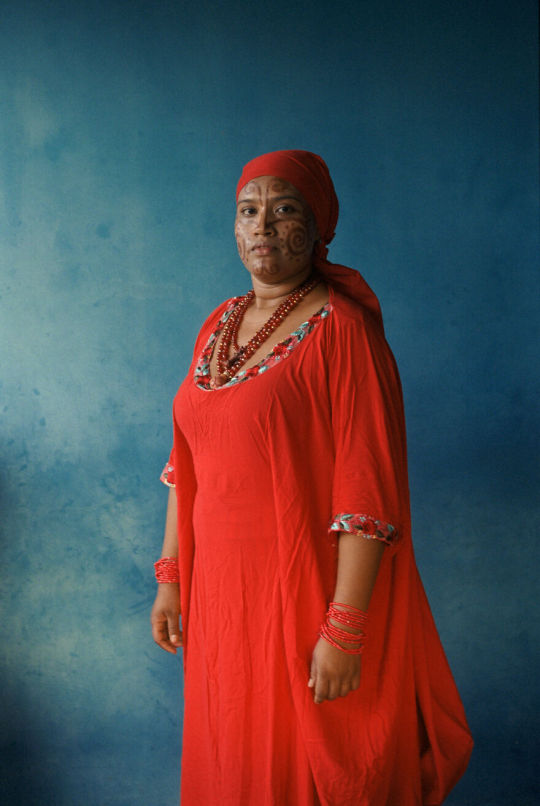
Miruku
"Miruku focuses on the Wayuus, an indigenous population from La Guajira, Colombia’s coastal desert. Commissioned by the 1854/British Journal of Photography and WaterAid, the project examines how a combination of climate change issues and human negligence has led its various members to experience a stifling water shortage. In the region, the problem is cyclical and polymorphous. While some communities can achieve certain stability during rainy seasons, temperatures are bound to rise, drying up the land again. Global warming only aggravates this, causing droughts and famine, and spoiling the facilities and installations that help source clean water."
By Marisol Mendez & Federico Kaplan
2023 Sony World Photography Awards
#marisol mendez & federico kaplan#photographers#culture#wayuus#sony world photography awards#la guajira#colombia#indigenous population
2 notes
·
View notes
Text
Top Charity Organizations in Pakistan Providing Clean Water Solutions

Access to clean and safe water is a fundamental human right, yet millions in Pakistan still face water scarcity and contamination issues. Numerous organizations are working tirelessly to address this pressing issue, providing clean water solutions to underprivileged communities. This article highlights the top charity organizations in Pakistan that are making a significant impact in this domain.
Shifa Foundation: A Leader in Water Sanitation
Shifa Foundation has been at the forefront of providing clean water solutions across Pakistan for three decades. Their initiatives range from provision of clean water to setting up water hand pumps in urban slums of Pakistan. With a focus on sustainability, Shifa Foundation ensures that communities not only have access to clean water but also receive training on maintaining these resources. Their Water, Sanitation, and Hygiene (WASH) programs are particularly impactful, reaching thousands of households annually.
Key Achievements of Shifa Foundation
Installation of 500+ deep-water wells in drought-affected areas.
Provision of water filtration systems in more than 200 schools.
Training programs for local communities on water conservation and hygiene.
Saylani Welfare International Trust: Comprehensive Clean Water Solutions
Saylani Welfare International Trust is renowned for its multifaceted approach to providing clean water. Their projects include installing hand pumps, water tanks, and reverse osmosis plants in water-deprived areas. They also focus on emergency water supply during natural disasters, ensuring that affected populations have access to potable water.
Saylani Welfare’s Contributions
Deployment of 1,000+ hand pumps in remote villages.
Operation of mobile water filtration units during floods and droughts.
Community engagement programs to promote water conservation practices.
Edhi Foundation: Lifesaving Water Initiatives
The Edhi Foundation is synonymous with humanitarian work in Pakistan, and their efforts in providing clean water are no exception. They have established water purification plants in urban and rural areas, offering free access to clean drinking water. The foundation also organizes water distribution campaigns in regions hit by water shortages, ensuring that no one goes thirsty.
Highlights of Edhi Foundation’s Water Projects
Operation of over 50 water purification plants across Pakistan.
Regular water distribution drives in drought-stricken regions.
Partnerships with local governments to expand clean water access.
Al-Khidmat Foundation: Sustainable Water Solutions
Al-Khidmat Foundation focuses on long-term solutions to water scarcity. Their projects include rainwater harvesting, solar-powered water pumps, and community-owned water filtration plants. Al-Khidmat’s approach is to empower local communities by involving them in the planning and implementation of water projects, ensuring sustainability and ownership.
Al-Khidmat Foundation’s Water Projects
Installation of solar-powered water pumps in areas with electricity shortages.
Development of rainwater harvesting systems in hilly regions.
Community-managed water filtration plants ensuring local ownership.
WaterAid Pakistan: Empowering Communities Through Clean Water
WaterAid Pakistan is part of a global network focused on providing clean water, sanitation, and hygiene. Their projects are designed to be inclusive, targeting the most vulnerable populations, including women and children. WaterAid’s approach involves building resilient water infrastructure and promoting hygiene education to ensure long-term benefits.
Impact of WaterAid’s Initiatives
Construction of climate-resilient water infrastructure in flood-prone areas.
Hygiene education programs benefiting thousands of children.
Collaborations with local NGOs to scale clean water solutions.
Pani Pakistan: A Mission for Clean Drinking Water
Pani Pakistan is dedicated to eradicating water-borne diseases by providing access to clean drinking water. Their initiatives include installing community water filtration plants, distributing water purifiers to households, and conducting awareness campaigns on water hygiene. Pani Pakistan is known for its rapid response to water crises, ensuring immediate relief to affected communities.
Achievements of Pani Pakistan
Installation of 300+ community water filtration plants in rural areas.
Distribution of water purifiers to over 10,000 households.
Nationwide awareness campaigns on the importance of clean water.
Muslim Hands Pakistan: Ensuring Access to Clean Water
Muslim Hands Pakistan operates extensive clean water programs, focusing on the most impoverished and remote areas. Their projects include deep wells, gravity-fed water systems, and school water programs. Muslim Hands also prioritizes water conservation, educating communities on sustainable water use practices.
Muslim Hands’ Water Projects
Construction of 400+ deep wells in remote villages.
Implementation of gravity-fed water systems in mountainous areas.
School water programs providing clean water and hygiene education.
The Role of Charity Organizations in Pakistan’s Water Crisis
The work of these organizations is critical in addressing Pakistan’s growing water crisis. By providing sustainable clean water solutions, they are not only improving public health but also empowering communities to manage their water resources effectively. The collective efforts of these organizations are a beacon of hope for millions, ensuring that every individual in Pakistan has access to the most basic necessity of life—clean water.
Challenges Faced by Charity Organizations in Providing Clean Water
Despite the noble efforts of these organizations, there are significant challenges that they must overcome to ensure the provision of clean water across Pakistan. These challenges include:
Geographical Barriers
Pakistan's diverse geography presents a major hurdle in the implementation of clean water projects. The rugged terrain of mountainous regions, such as those in Khyber Pakhtunkhwa and Balochistan, makes it difficult to transport materials and build water infrastructure. Similarly, the arid deserts of Tharparkar require specialized solutions like deep wells and solar-powered pumps to extract groundwater.
Financial Constraints
Many charity organizations rely heavily on donations and grants, which can fluctuate based on global economic conditions. Limited funding often hampers their ability to scale up operations or invest in advanced technologies. This financial uncertainty can delay critical projects and restrict the reach of clean water initiatives to only the most accessible areas.
Political and Bureaucratic Hurdles
Navigating Pakistan's complex political landscape can be challenging for charity organizations. Delays in obtaining permits, corruption, and bureaucratic red tape can significantly slow down project implementation. Moreover, regional conflicts and instability in certain areas can prevent organizations from operating effectively, putting communities at risk.
Cultural and Social Barriers
Cultural beliefs and practices can sometimes pose challenges to clean water initiatives. For example, in some rural areas, there may be resistance to using certain types of water infrastructure due to traditional practices or misconceptions about water quality. Overcoming these barriers requires extensive community engagement and education to ensure the successful adoption of clean water solutions.
Environmental Factors
Climate change is exacerbating water scarcity in Pakistan, with increasing temperatures and unpredictable rainfall patterns leading to more frequent droughts. These environmental challenges make it difficult to maintain a consistent water supply, especially in already vulnerable regions. Charity organizations must continuously adapt their strategies to address these shifting environmental conditions.
Innovative Solutions and Future Prospects
To overcome these challenges, charity organizations in Pakistan are increasingly turning to innovative solutions. These include:
Solar-Powered Water Systems
The use of solar energy to power water pumps and filtration systems is gaining traction, especially in remote areas where electricity is scarce. Solar-powered systems are not only environmentally friendly but also cost-effective in the long run, reducing dependency on traditional power sources.
Smart Water Management Technologies
Organizations are beginning to adopt smart water management technologies, such as sensors and IoT devices, to monitor water quality and usage in real-time. These technologies enable more efficient management of water resources and help identify issues like leaks or contamination early on.
Community-Led Water Conservation Programs
Empowering communities to take ownership of water resources is essential for the sustainability of clean water initiatives. Charity organizations are increasingly involving local populations in the planning and maintenance of water projects. This approach not only ensures that the solutions are culturally appropriate but also fosters a sense of responsibility among community members.
Partnerships and Collaborations
Collaboration between charity organizations, government agencies, and the private sector is crucial for scaling up clean water initiatives. By pooling resources and expertise, these entities can tackle larger projects and reach more communities. International partnerships also play a vital role, bringing in advanced technologies and funding that might not be available locally.
The Impact of Clean Water on Communities
Access to clean water has a transformative impact on communities in Pakistan. It improves public health by reducing the prevalence of water-borne diseases such as cholera and dysentery. With reliable access to clean water, children are less likely to miss school due to illness, and adults can engage in productive activities instead of spending hours collecting water.
Moreover, clean water initiatives empower women, who are often the primary water collectors in rural areas. By reducing the time spent on this task, women have more opportunities to pursue education, employment, and other activities that contribute to their personal and community development.
Conclusion: A Collective Responsibility
While the efforts of charity organizations in Pakistan are commendable, addressing the country's water crisis requires a collective effort. It is not just the responsibility of these organizations but also the government, private sector, and the public to contribute towards sustainable water solutions. By supporting these organizations, whether through donations, volunteering, or advocacy, individuals can play a crucial role in ensuring that every person in Pakistan has access to clean, safe drinking water.
The path to universal access to clean water is long and challenging, but with continued dedication and innovation, it is a goal within reach. The organizations highlighted in this article are paving the way, but they need our support to continue their vital work.
1 note
·
View note